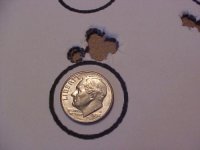Standard 30 caliber seems to be 11 and 12. Why 17 and 18 on the 30 BR?
The reason I ask is because I'am working with a 6.8 BR 11 twist and was wondering what difference a 17 or 18 twist might do. Factory bullets in the 90 to 110 range with pretty good results so far. What would a twist change do? (other than cost a bunch for a one time application because nobody makes a .270 in 17 or 18 twist) It would be a "one of a kind". If the 30 BR is the hot ticket, why not get real close with a 6.8 BR? Opinions and thanks, Mike.
As pointed out above, first, you'd need bullets, or, at least, jackets, and a set of bullet swaging dies. You'd need to calculate a jacket length suitable for the desired bullet weight, then, you'd need to know the bullet geometry, and determine the finished over-all bullet length produced by your dies, and the jackets. Then, go to a reliable drag/twist calculator, such as the McCoy based JBM Ballistics calculator, enter the geometry/mass data and calculate the 'correct' barrel twist-rate for that particular bullet.
Of note, for the bullet
LENGTHS being used for [thirty caliber] BR work, the 17/18" twist rates are
NOT '
slow', but rather
JUST RIGHT (as in, CORRECT), imparting, at least, 1.4 gyroscopic stability factor (Sg) to the bullets in question. For the best possible precision, Sg should be between 1.4 and 1.9: it's best to calculate for Sea Level , and use 'Standard conditions'; doing so will provide a reliable safety-net, as will using a bullet somewhat - say 0.030" - LONGER than the REAL model. As I recall, when assisting with a .264 bullet project, for a 82 -85 Gr. bullet, we needed a .920" long jacket, which in turn, dictated a 1:12" twist rate. Both the other person and I were surprised at the relatively 'fast' twist requirement - we'd been leaning toward 1:14" or so. A .277 bullet, of similar length/weight, would get by with a slightly slower twist-rate . . . this is interesting - I'll do a calculation . . .
The BIG issue is always suitable jackets. With the BIG name brand bullets, you could take the measurements, and use JBM to calculate twist-rate, which, for the particular bullet, will produce a 1.4, or greater Sg. But, dreaming of suitable jackets, I took a wild guess - at the length - and came up with the following model: Tangent 10 caliber ogive (nose radius); 0.050 meplat diameter; finished OAL of 0.97" (Flat BASE bullet); weight, 97 Gr. (10.0 Specific gravity); BC .383; Sectional Density 0.181;
twist rate [
for 1.5 Sg]
1 turn in
13.9 inches. Just one possibility.

Good shootin'! RG


